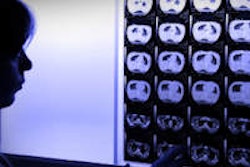
Imaging facilities have found YouTube to be a useful social media platform for educating patients about radiology procedures they are about to undergo. But how well are they succeeding? A new study published in the Journal of the American College of Radiology has found room for improvement.
While many radiologists are using YouTube and other sites to offer educational material about imaging to patients, the quality of that material could use some improvement, according to a team led by Dr. Andrew Rosenkrantz of NYU Langone Medical Center. The group recently analyzed the content of YouTube videos created by imaging facilities (JACR, December 2016, Vol. 13:12, Part A, pp. 1509-1513).
"Video content was relatively lacking for numerous items relating to quality and safety," the authors wrote.
Vetting the vids
Almost 90% of patients use online resources to research health conditions, diagnosis, and treatment, they wrote. And radiologists are taking advantage of the medium.
 Dr. Andrew Rosenkrantz from NYU Langone Medical Center.
Dr. Andrew Rosenkrantz from NYU Langone Medical Center."Social media platforms such as YouTube provide a valuable means of communication for radiology practices, with one investigation reporting that 76% of private radiology groups maintain at least one social media account," the authors wrote. "Online video sharing, rather than traditional static web pages, can be particularly helpful by depicting the examination process in real-time, including interactions with the radiologist and office staff."
For the study, Rosenkrantz and colleagues searched YouTube for terms such as "CT scan," "MRI," "ultrasound patient," "PET scan," and "mammogram" to identify educational patient videos created by health organizations. They assessed 63 videos across a range of features; of these, 16 were for MRI, 16 were for CT, 13 were for PET, 11 were for mammography, and seven were for ultrasound.
The average video length ranged from three minutes for mammography to almost seven minutes for PET, the researchers found. The average number of views per video was highest for MRI and mammography and lowest for ultrasound.
| Average video length and views by modality | ||
| Modality | Video length in minutes | Views |
| MRI | 4.2 | 293,362 |
| Mammography | 3 | 151,664 |
| CT | 3.6 | 50,406 |
| PET | 6.7 | 32,582 |
| Ultrasound | 4.3 | 962 |
Rosenkrantz and colleagues found that 52.4% of the videos were created by hospital radiology departments. Meanwhile, 19% came from private radiology centers, 17.5% from nonprofit health organizations, 7.9% from equipment vendors, and 3.2% from for-profit health organizations.
More than a quarter of the videos used creative formats such as animation, songs, humor, or a story-based structure. All of the videos showed a patient undergoing the exam, while 84.1% also featured a technologist and 20.6% included a radiologist. Key content included the following:
- Length of exam (69.8%)
- Potential pain or discomfort (65.1%)
- Potential radiation exposure (41.3%)
- Radiology report or results (36.5%)
- Radiologist's role in interpreting the exam (27%)
- Need for laboratory work (13.3%)
- Scientific references (1.6%)
For CT, the most mentioned topic was intravenous contrast, while for MRI, the most mentioned topic was anxiety or claustrophobia, followed by noise during the exam. For ultrasound, the most mentioned topic was the use of ultrasound gel; for PET, it was radiotracer injection. Finally, for mammography, the most mentioned topics were undressing for the exam, avoiding the use of deodorant, and the possibility of additional images, Rosenkrantz and colleagues found.
Room for improvement
The videos the researchers evaluated did a reasonably good job presenting content related to the patient experience during imaging. However, most did not address important topics such as quality and safety concerns, according to the group.
Many "videos also failed to mention a number of other central issues," the authors wrote. "These include the presence and role of the radiologist as well as various items related to examination quality and safety, [such as] CT and MRI contrast safety, radiation exposure, diabetic precautions in PET, and dense breasts in mammography."
These content gaps illustrate a path to better use of social media such as YouTube, Rosenkrantz and colleagues concluded.
"If the improvements are made, then YouTube could provide a powerful opportunity for further educating the public regarding the central role of radiologists in the performance, interpretation, and quality assurance of imaging examinations," they wrote.




















